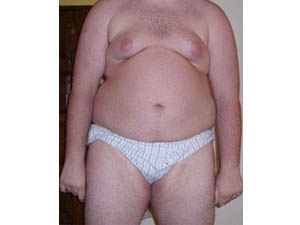Gastric Band Side Effects
As with any surgical procedure, adjustable Gastric Band surgery is associated with some degree of risk, but is overall a very safe procedure with few severe side effects. The risk benefit assessment of the procedure needs to be done in the context of the original condition of the patient
Short term complications may include:
Vomiting. Many patients may vomit after intake of food. In most cases this is caused by eating too much and too quick. If eating is slow and calm, patients will learn to listen to the signals from the stomach. Eating should be abandoned if the patient feels nauseated, has pain or vomits. Continued vomiting is a warning sign. This can either be the result of the gastric pouch outflow becoming too narrow or by wrong eating behaviour. This results in a necessary adjustment to the Band device. Continued vomiting should be corrected by the physician in charge.
Constipation. Some patients may have a feeling of constipation after surgery. This is caused mainly due to the fact that the reduction of food intake leads to less faeces and it is thus normal with fewer bowel movements. Should laxatives become necessary, it is advisable to use liquid laxatives, such as lactatulose and abstain from so called bulking agents.
Hair loss. Many patients will suffer from increased hair loss during the first six months after surgery. This is caused by the relative starvation. This, however, will not lead to baldness and eventually normal hair growth will return.
Long-term complications may include:
Infection. There have been a few cases of deep infection in the abdomen requiring removal of the band. There have also been some infections of the port system requiring removal of the port. Injection sterility is obviously of great importance in order to minimize or avoid this complication.
Band problems; Since reinforcing the band with additional dacron mesh this complication has since been nonexistent. In five other cases, however, the balloon has broken and these patients immediately started to gain weight. The balloon was later reinforced in order to withstand additional pressure. These patients all required a second operation. Although the implant has been improved, it must be pointed out that there is no guarantee against technical problems like these.
Band Mitigation. Basically there are two types of bands in use. There is a Swedish band and a French band. Migration occurs when the balloon or band migrates through the stomach wall and into the stomach lumen. These patients regained their preoperative weight quickly. This has occurred so far in about 3% of the cases when the Swedish band has been used. With the French band there are no migrations at this point in time. The French band has however been used during a much shorter time frame and since migration usually does not occur until 18-24 months after surgery it is too early to say which band will be the better in this respect. Patients who have their bands filled quickly and with high total volumes have an increased risk of migration. Filling must be slow and gradual. If certain guidelines are observed the frequency of this type of complication will decrease.
Port Problems. There have been port problems in about 4% of the cases. There has been two types of problems. The first is dislocation of the port. It may move around, turn up-side-down and can in this position not be injected. Thus, it is necessary to adjust it. This requires a relatively simple operation requiring only local anaesthesia it is nonetheless a setback to the patient. The second problem is perforation of the connecting tube close to the port. Some patients have extra fat over the chest and it is therefore sometimes difficult to hit the ”bulls eye” with the needle which results in the tube becoming accidentally perforated. This results in a loss of fluid, widening of the opening, and subsequent weight gain. This is also corrected in local anaesthesia. The design of the system has been changed in order to avoid this problem.

